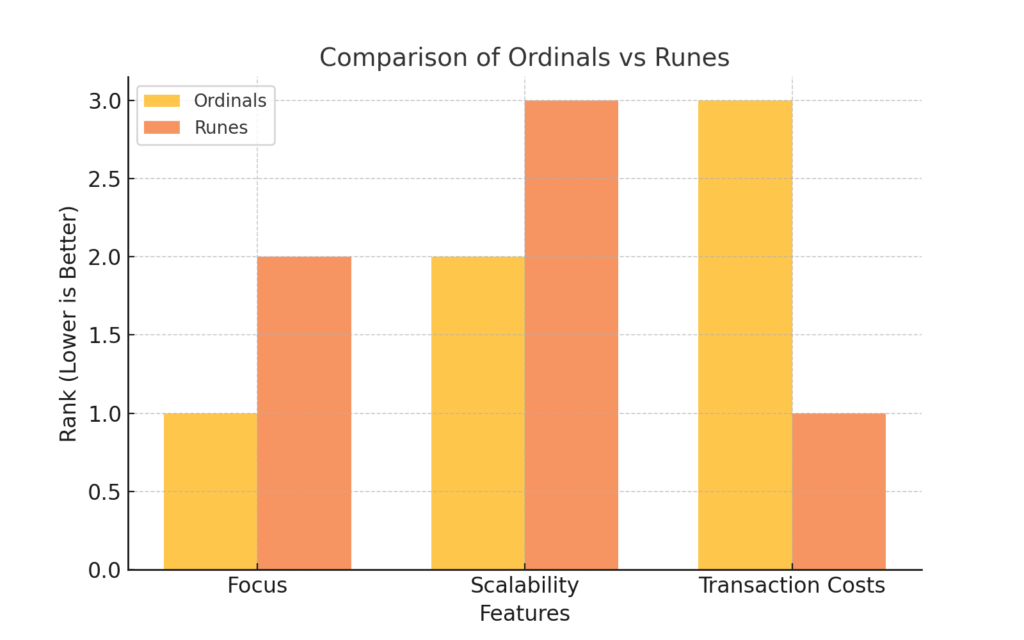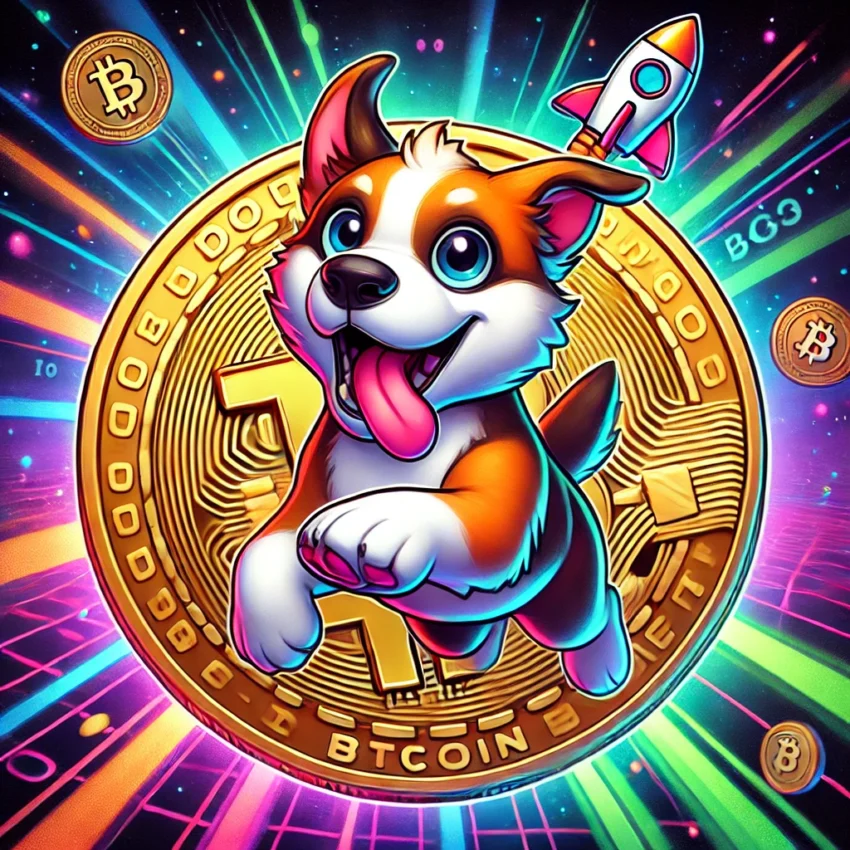Bitcoin has continually evolved, moving from a digital currency to a platform capable of creating and managing tokens. The advent of Ordinals enabled users to inscribe unique data, such as text and images, onto satoshis, sparking creativity in non-fungible token (NFT) development. However, Ordinals struggled with scalability and efficiency, particularly for fungible tokens that require interchangeability.
Bitcoin Runes emerged to address these limitations, offering a more efficient, scalable, and developer-friendly protocol for fungible token creation. By streamlining token standards, Runes reduce transaction fees and alleviate network congestion, making them a game-changer for Bitcoin tokenization.
A simple comparison illustrates this shift:
| Feature | Ordinals | Runes |
|---|---|---|
| Focus | Unique inscriptions (NFTs) | Fungible tokens |
| Scalability | Limited | High |
| Transaction Costs | Higher | Lower |
This advancement broadens Bitcoin’s utility, positioning it as more than just a store of value.
Runes in Action: Empowering Meme Coins and Beyond
One of the most exciting applications of Bitcoin Runes is their role in powering meme coins, which have become a cultural phenomenon in the crypto space. A standout example is the token Dog Go to the Moon Rune, which highlights the creativity and accessibility enabled by Runes.
Meme Coins: Popularity and Impact
- Accessibility: Meme coins created using Runes are more affordable to deploy, encouraging participation from small-scale developers.
- Cultural Appeal: Tokens like Dog Go to the Moon Rune attract a wide audience, driving interest in Bitcoin’s token ecosystem.
- Network Activity: Increased demand has led to higher transaction volumes, showcasing Bitcoin’s versatility but also raising concerns about scalability.
Here’s a visual snapshot of meme coin trends:
Ordinals vs Runes Comparison Graph

Bar chart comparing Ordinals and Runes on focus, scalability, and transaction costs. Runes rank better in transaction costs and scalability, while Ordinals perform slightly better in focus.
The Future of Bitcoin Tokenization
The success of Runes underscores Bitcoin’s potential as a platform for decentralized innovation. With projects like Dog Go to the Moon Rune showcasing their practical applications, Runes are paving the way for a more diverse and inclusive token economy.
Bitcoin’s adaptability, coupled with advancements like Runes, ensures its relevance in a fast-changing blockchain ecosystem. Whether you are a developer exploring tokenization or an investor seeking opportunities, Runes represent a significant leap forward for Bitcoin’s role in decentralized finance.
Why Runes are a Game-Changer
Bitcoin Runes go beyond technical improvements—they are revolutionizing the way tokens are managed and created. By reducing transaction costs and improving scalability, they open the door for broader adoption of Bitcoin as a platform for innovation. Developers now have access to a user-friendly framework that encourages creativity without compromising on security or efficiency.
For users, Runes simplify transactions and make Bitcoin a more practical choice for tokenized applications. This positions Bitcoin as a leader in token innovation, demonstrating its ability to adapt and thrive in the competitive crypto space.
As more developers adopt Runes, Bitcoin’s ecosystem will expand, bringing exciting opportunities for creators and investors alike.
Challenges and Opportunities with Runes
While Runes offer many advantages, they are not without challenges. The increasing popularity of meme coins and other tokenized assets can lead to higher network congestion and transaction fees. These challenges raise important questions about Bitcoin’s scalability and long-term sustainability as a platform for tokens.
However, these challenges also present opportunities for innovation. Developers are exploring ways to optimize the protocol further, ensuring that Bitcoin remains efficient and accessible. The ongoing improvements to the Runes standard will likely shape the future of tokenization on Bitcoin.
By addressing these challenges, Bitcoin can solidify its position as a platform for both fungible and non-fungible tokens, ensuring its relevance in the evolving blockchain landscape.
What’s Next for Bitcoin Runes?
As the adoption of Runes grows, the Bitcoin ecosystem will likely see a surge in innovative projects and applications. From utility tokens to collectibles, Runes have the potential to redefine how tokens are used and perceived. This evolution is exciting not just for developers but for the entire crypto community.
Projects like Dog Go to the Moon Rune are just the beginning. The versatility and efficiency of Runes make them an ideal standard for future applications, ensuring that Bitcoin remains at the forefront of blockchain innovation.
Whether you’re a developer, an investor, or an enthusiast, Bitcoin Runes represent a transformative step forward, unlocking new possibilities and reinforcing Bitcoin’s position as a leader in decentralized technology.

